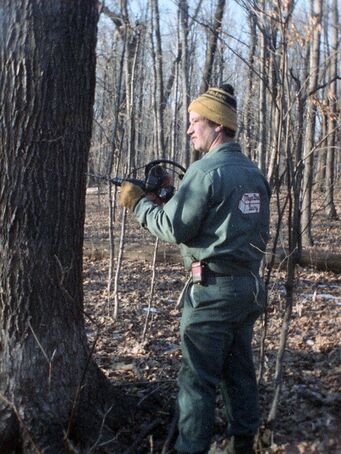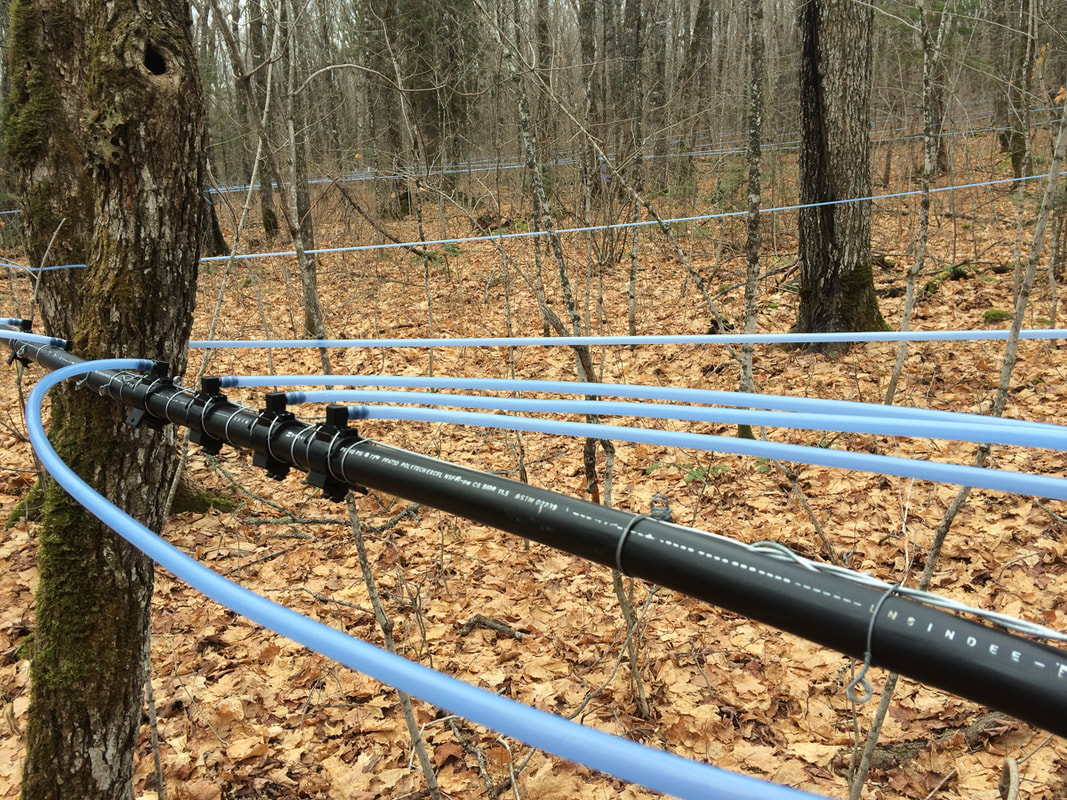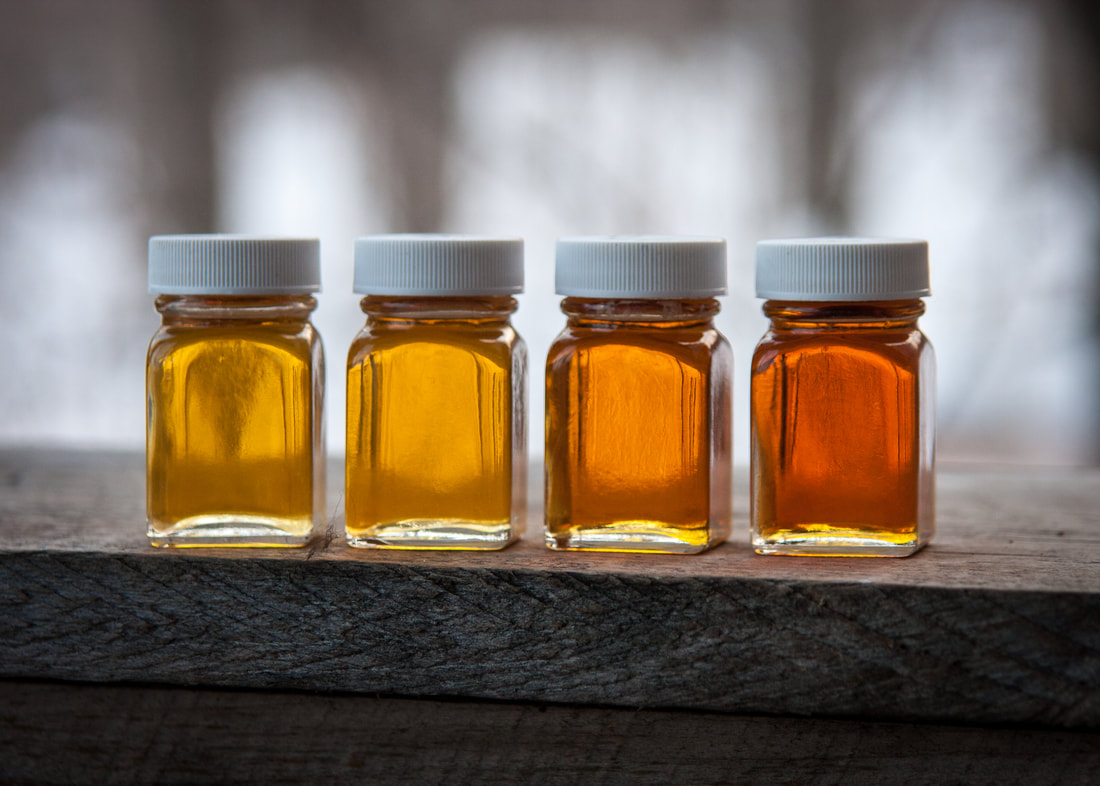|
Maple syrup is made in early spring when the daytime temperatures rise above freezing and nighttime temperatures fall below freezing. In Minnesota, maple syrup is primarily made during the months of March and April. Maple sap is collected from the maple tree by drilling a small hole about 1 ½” deep into the tree. A small spout is gently tapped into the hole and when the conditions are right, the sap will flow one drop at a time into an attached bucket or into a drop line, which connects the tree to a sap collection system.
|
|
The sap is collected and then boiled to remove the excess water. Sap from the tree is approximately 1½ percent to 3½ percent sugar. Though the sap looks like water, it often tastes slightly sweet. Depending on the sugar content of the sap it can take 30 – 50 gallons of sap to make one gallon of finished maple syrup. As the sap is boiled the color of the syrup changes from clear to a golden brown. Different grades of maple syrup are made throughout the maple season. When the conditions are cold and the sap is running hard, producers often make a light amber or delicate grade. This has a mild maple flavor. Medium and dark amber, also known as Amber/Rich and Dark/Robust, are made throughout the season. Very Dark/Strong (Grade B) is made at the end of the season when the overall temperatures are warmer and trees are getting ready to form leaf buds.
|
The boiling of the sap can be done over a wood fire. Other methods include using propane fuel or Number 2 fuel oil. Larger producers often employ energy saving ways to cut down on boiling time and fuel. Reverse Osmosis and preheaters are very common in the production of maple syrup.
Once the majority of the water is boiled off and the syrup reaches the correct sugar density for maple syrup (66.5% brix), it can be hot packed in canning jars or other containers. The hot syrup is often filtered before canning removing any niter (a natural byproduct of boiling maple sap) or miscellaneous debris such as twigs or pieces of leaves.
The maple sugaring season ends when the nighttime temperatures no longer fall below freezing and trees begin to generate leaf buds. The sap production falls off and the quality of sap degrades due to the different metabolic processes occurring within the tree. The spouts are all removed from the trees and the equipment cleaned and stored away. Depending on the total length of the season and the location of the sugar bush, a maple tree can produce enough sap to make a quart to one-half gallon of finished maple syrup.
Once the majority of the water is boiled off and the syrup reaches the correct sugar density for maple syrup (66.5% brix), it can be hot packed in canning jars or other containers. The hot syrup is often filtered before canning removing any niter (a natural byproduct of boiling maple sap) or miscellaneous debris such as twigs or pieces of leaves.
The maple sugaring season ends when the nighttime temperatures no longer fall below freezing and trees begin to generate leaf buds. The sap production falls off and the quality of sap degrades due to the different metabolic processes occurring within the tree. The spouts are all removed from the trees and the equipment cleaned and stored away. Depending on the total length of the season and the location of the sugar bush, a maple tree can produce enough sap to make a quart to one-half gallon of finished maple syrup.




